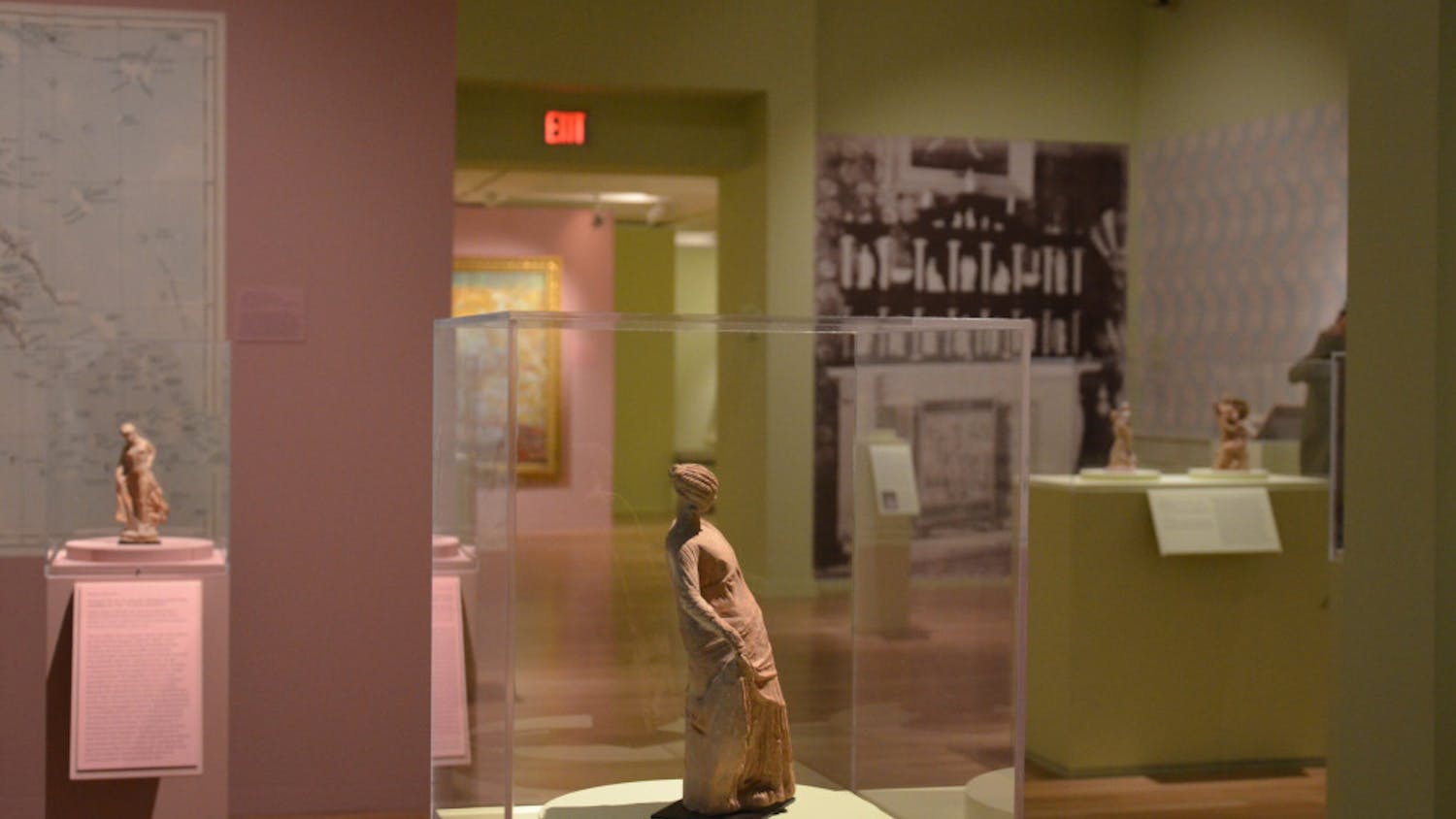 Courtesy of the High Museum of Art
Courtesy of the High Museum of ArtCampbell’s Soup and Marilyn Monroe only scratch the surface of the subjects of Andy Warhol’s prints in the current exhibit at the High Museum of Art. An artist praised for his groundbreaking commentary yet criticized for his lack of inspiration, Warhol explored diverse styles and shed light on controversial issues.
Each section of the exhibit is curated by a theme in Warhol’s personal and professional life. This layout allows visitors to focus on one element of the collection at a time, which makes the broad range of artwork less overwhelming and more easily digestible. “Starstruck” includes portraits of prominent leaders and celebrities, such as Chinese leader Mao Zedong and actress and singer Liza Minnelli. All the portraits are similar in structure; multiple copies of the same photograph are printed in different color schemes. As the museum explains in its description of the piece, the repetition is symbolic of mass production during the Cold War era. The vivid, manufactured colors are as artificial as the public’s perception of icons in the 1970s and ’80s. Warhol’s portraits reflect the commodification of American idols and how they were treated as objects instead of people.
Warhol submitted to corporate materialism during his career as a freelance graphic designer for companies. His advertisements for I. Miller Shoes are minimalist, watercolor cartoons with captions like “Uncle Sam wants shoe!” in handwritten script — possibly a witty comment about how consumers follow trends. If Diana Ross mentioned on a televised interview that she wore I. Miller heels, many of her fans would likely go out and buy the shoes. Warhol taps into Americans’ devotion to their country and tempts consumers using their own patriotism. As a prominent global leader, the United States overwhelmingly influences the rest of the world. Warhol’s advertisements would attract purchasers in other countries because if Uncle Sam wants I. Miller Shoes, the rest of the world wants a pair.
From observing Warhol’s art, the line between mocking the loss of individualism and objectifying people is blurred. The prints of Mao in different colors — Warhol’s signature style — demonstrate Warhol’s interpretation of the government’s control over people. Repeating the face of a leader resembles propaganda used to instill loyalty to the Communist Party of China.
Warhol himself played a crucial role in American politics in the campaign for the 1976 U.S. presidential election. The Democratic National Committee commissioned Warhol for former U.S. President Jimmy Carter’s presidential campaign. In contrast to Mao’s portrait, Warhol’s representation of Carter is black and white, with light red overlapping the viewer’s right side of the print. Perhaps Warhol believed Carter’s ideals were realistic and unifying, while Mao’s philosophy appeared artificial and misinterpreted. Still, Warhol’s apparent distaste for indoctrination is contradicted by his advertisement for a political party.
Trauma saturates Warhol’s art, especially in works from 1968 onward, after he was shot by Valerie Solanas. His screenprints, like “Electric Chair” (1971), express that the constant stream of violent images in the media devalues a person’s understanding of pain and suffering. His opinion of capital punishment is not the focus; rather, he expresses interest in how society perceives death and pain through a removed lens. A collection of four prints of Jacqueline Kennedy depicts her emotions before and after the assassination of her husband: First she is smiling, but her happiness is slowly replaced by horror in the other three photographs. Warhol sympathizes with the first lady and understands that pain is a process. By choosing Jacqueline Kennedy, Warhol demonstrates that even ubiquitous, American icons, who are praised for their character, struggle in the face of tragedy. Warhol humanizes the glamorous lives of celebrities.
The Warhol exhibit is easily accessible to the modern viewer because the 1960s to ’80s is recent history — many visitors remember when Warhol emerged as a new artist. In general, people are more aware of the social issues Warhol addressed and the attitudes toward them have changed. “Endangered Species” (1983) addressed preservation when global climate change and humankind’s impact on the environment were still in greater doubt. At the time, the way Warhol incorporated this controversial subject in art was unique. Similarly, his print titled “Birmingham Race Riot” (1964) drew attention to a divisive movement. As the museum criticizes in its description of the piece, Warhol’s title is inaccurate because the event was a peaceful march disrupted by police.
Warhol’s observations of the world were not consistent with one set of beliefs; the ideologies of his pieces often contradict each other. But no matter what he believed, his ability to disrupt an observer’s thoughts is what makes his art important. Everyone has different feelings toward Warhol, but everyone feels something.
This exhibit closes Sept. 10, 2017.









